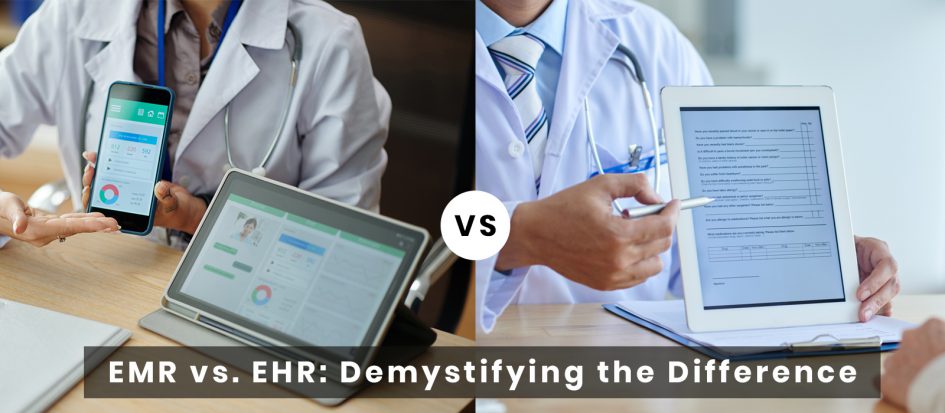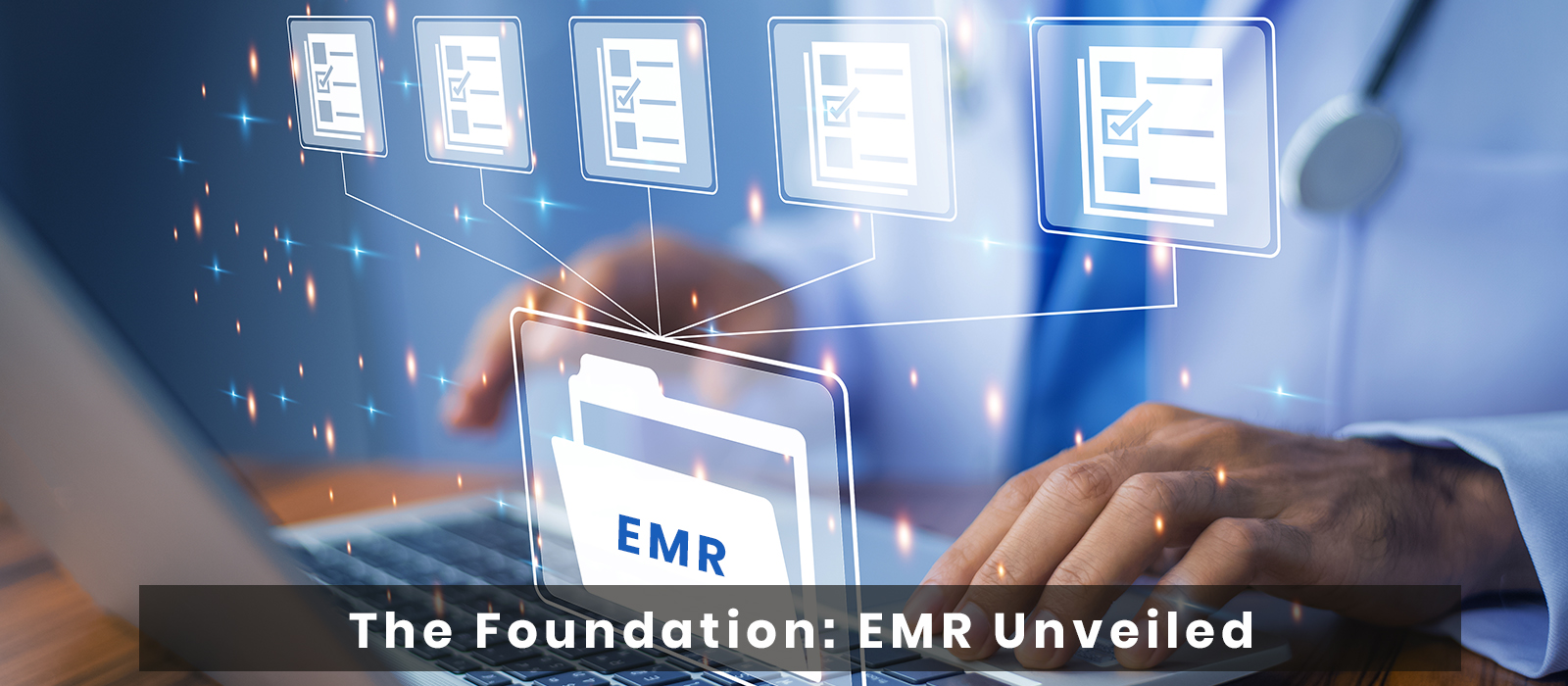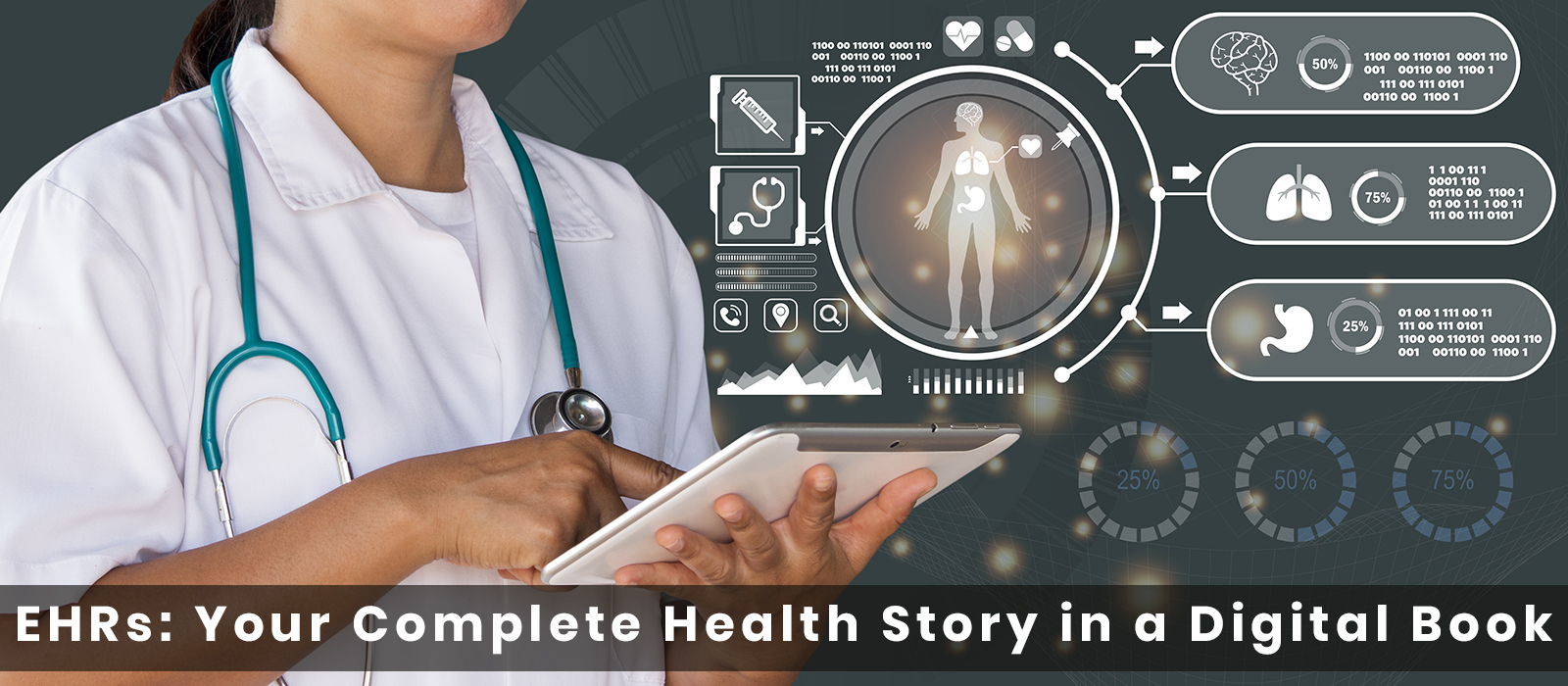Introduction:
Switching from paper to computers in healthcare was a big deal. It wasn’t just about using computers instead of paper; it was about making healthcare better by using technology to store and manage your health information.
Why It Matters: Digital records, like Electronic Medical Records (EMRs) and Electronic Health Records (EHRs), have become essential in healthcare. They help doctors and nurses quickly access all the information they need about you, leading to better decisions and improved health results.
What We’ll Explore: In this exploration, we’ll dig into the differences between the earlier Electronic Medical Records (EMR) and the more advanced Electronic Health Records (EHR). We’ll keep it simple and understand how these digital systems are changing the way healthcare works. Let’s start by unraveling the basics and see how they play a big role in today’s healthcare world.
The Foundation: EMR Unveiled
Electronic Medical Records (EMR) serve as the digital evolution of the traditional paper charts found in a single healthcare provider’s office. Imagine a comprehensive digital file containing a patient’s medical history, treatment plans, medications, and more. EMRs streamline internal processes, enhancing the efficiency of individual healthcare organizations. However, their scope is often limited to a specific facility, making seamless data sharing between different healthcare systems challenging.
Features of EMR:
- EMRs consolidate a patient’s medical history, prescriptions, and test results in one digital location.
- These digital records optimize internal workflows for healthcare providers, improving efficiency.
- EMRs empower doctors and practitioners to make informed decisions by providing quick access to patient data.
- EMRs are typically specific to a particular healthcare setting, which may limit data access across different providers.
How EMRs Benefit Healthcare Professionals:
For doctors and practitioners, EMRs serve as a valuable tool in managing patient information. When a patient returns for a follow-up or another visit, healthcare professionals can swiftly retrieve their EMR. It helps in understanding the patient’s medical journey, making informed decisions, and providing personalized care. EMRs are especially effective within a single healthcare provider, ensuring that the entire team is on the same page when it comes to patient care.
Limitations and the Need for Collaboration:
While Electronic Medical Records (EMRs) are exceptional within a single healthcare provider, they come with a challenge known as “data silos.” This means that the patient information stored in one EMR might not be easily accessible or shared with another healthcare provider. It’s like having separate islands of data, If a patient seeks care from another provider or facility, accessing their complete health record might be a challenge. This is where the transition to Electronic Health Records (EHRs) becomes crucial, as we’ll explore in the next section.
EHRs: Your Complete Health Story in a Digital Book
Electronic Health Records (EHR) Explored :
Recognizing the limitations posed by Electronic Medical Records (EMRs), the healthcare industry has evolved towards a more interconnected solution known as Electronic Health Records (EHRs). Unlike EMRs, which are confined to individual healthcare settings, EHRs are designed to bridge the gap and facilitate a more comprehensive approach to patient care.
From Silos to Connectivity: EHRs break down the data silos associated with EMRs. They are designed to seamlessly connect and share health information across different healthcare providers, ensuring a complete and unified view of a patient’s medical history, treatments, and outcomes. This interconnectedness eliminates the hurdles faced when patients seek care from multiple sources.
Comprehensive Patient Overview: One of the defining features of Electronic Health Records (EHRs) is their ability to provide a comprehensive and holistic view of a patient’s health. Unlike Electronic Medical Records (EMRs), which may capture data within a specific healthcare provider, EHRs amalgamate information from various sources. This includes primary care physicians, specialists, hospitals, laboratories, and other healthcare entities, creating a unified and detailed patient profile.
Patient Engagement and Empowerment: Electronic Health Records (EHRs) play a pivotal role in fostering patient engagement and empowerment. By providing individuals with access to their health records through secure patient portals, EHRs enable active participation in healthcare decisions. Patients can review their medical history, understand test results, and communicate with their healthcare providers, fostering a collaborative approach to care.
Security and Privacy Concerns: Making sure your health information is safe and private is really important in Electronic Health Records (EHRs). The digital nature of EHRs requires robust measures to safeguard sensitive health data from unauthorized access or breaches. To address these concerns, EHR systems employ advanced encryption methods, secure user authentication protocols, and strict access controls. Regular security audits and updates to the EHR infrastructure are essential to stay ahead of evolving cybersecurity threats. Additionally, healthcare providers adhere to strict privacy regulations, such as the Health Insurance Portability and Accountability Act (HIPAA) in the United States, to maintain confidentiality. Patient consent mechanisms and transparency in data usage further contribute to building trust in EHR systems. Despite these measures, ongoing efforts to enhance cybersecurity protocols and stay abreast of emerging threats remain imperative to uphold the integrity of patient information within EHRs.
Bridging the Gap: Key Differences
Scope of Information:
EMRs focus on data within a specific healthcare entity.
EHRs encompass a broader spectrum, integrating information from multiple sources.
Interoperability:
EMRs may lack seamless data exchange with external systems.
EHRs are designed for interoperability, promoting collaboration across diverse healthcare providers.
Patient-Centric Approach:
EMRs primarily cater to the internal processes of the provider.
EHRs prioritize a patient-centric model, promoting patient involvement and engagement in their healthcare journey.
Benefits and Challenges:
EMR Advantages:
Enhanced internal efficiency and streamlined processes.
Tailored to the specific needs of individual healthcare providers.
EMR Challenges:
Limited interoperability may hinder comprehensive patient care.
Data exchange barriers between different healthcare systems.
EHR Advantages:
A holistic patient view facilitates better-informed decision-making.
Improved coordination of care among multiple healthcare providers.
EHR Challenges:
Implementation complexities and associated costs.
Concerns about data security and privacy in a connected healthcare landscape.
Conclusion: Striking a Balance
In the grand scheme of healthcare technology, both EHRs and EMRs play pivotal roles. While EMRs excel in optimizing internal processes, EHRs shine in fostering a connected, patient-centric approach to healthcare. Striking a balance between the two, ensuring seamless interoperability, and prioritizing patient privacy will be key in navigating the complex yet promising landscape of digital health records.
As we continue to witness technological advancements in healthcare, understanding the nuances of EHRs and EMRs becomes not just a necessity but a cornerstone in delivering quality, coordinated, and patient-focused healthcare services.
In this landscape of advancing healthcare technology, the significance of a reliable platform for custom-made EHR and EMR systems cannot be overstated. AccuWebTech.com emerges as a beacon in this domain, boasting 20 years of expertise in web development services. The platform stands out as a leader, offering solutions that strike the delicate balance between enhanced internal efficiency (as seen in EMRs) and a patient-centric, interconnected model (as exemplified by EHRs).
AccuWebTech.com not only understands the intricacies of healthcare technology but also prioritizes the crucial aspects of interoperability, security, and patient privacy. Their seasoned experience in delivering tailored solutions makes them the best choice for healthcare providers seeking to navigate the complex yet promising landscape of digital health records.
As we move forward into an era of continual technological advancement, placing trust in AccuWebTech.com ensures a commitment to delivering quality, coordinated, and patient-focused healthcare services through cutting-edge EHR and EMR systems.





Leave a Reply